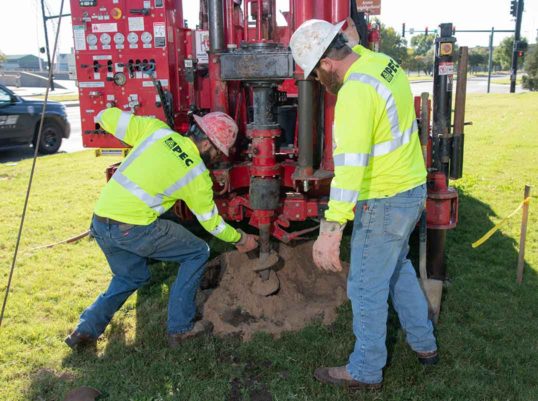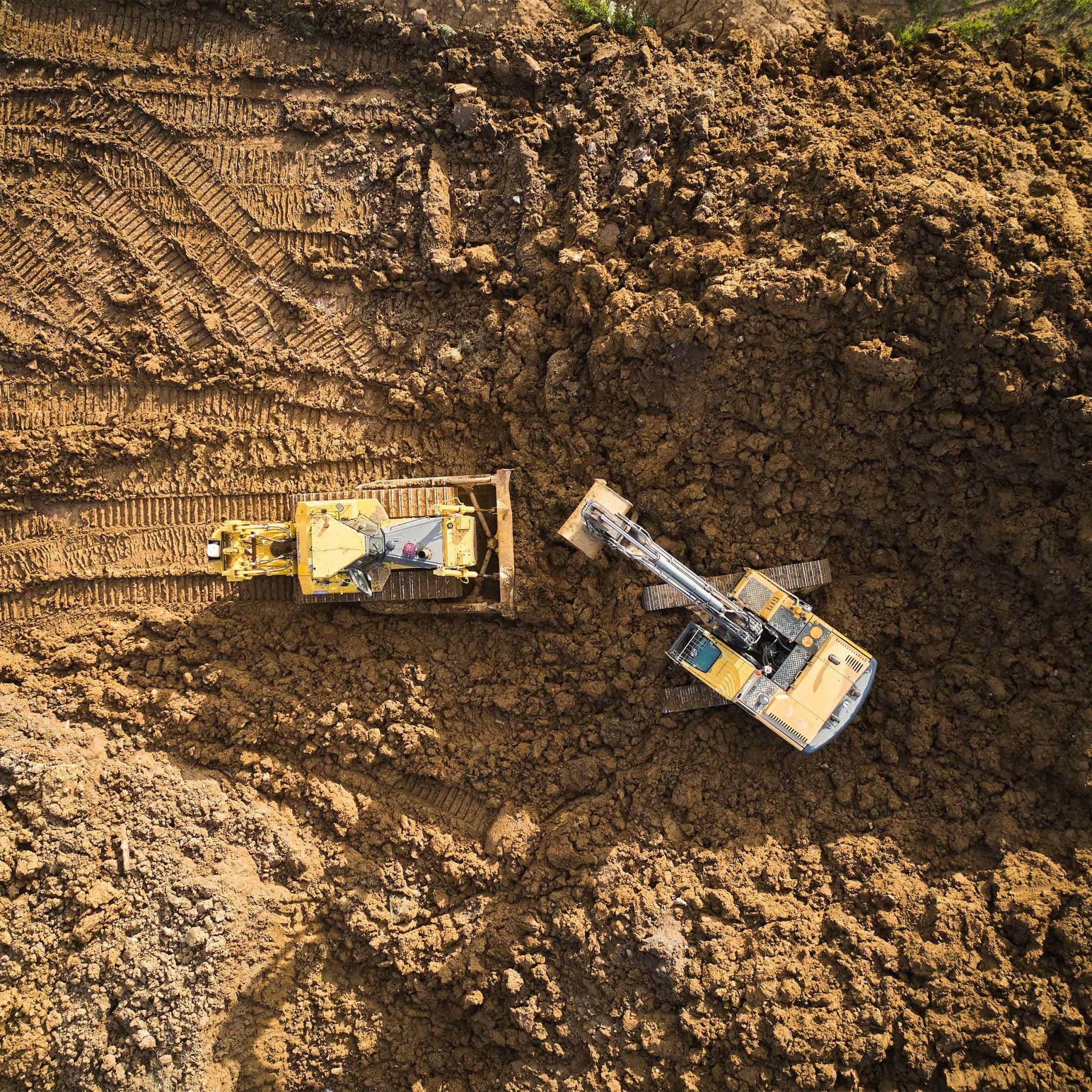The Important Contributions of Geotechnical Engineers in Examining Dirt Habits and Structure Style for Lasting Facilities Growth
Geotechnical designers work as a keystone in the realm of sustainable framework development, where their experience in examining dirt behavior directly affects the security and longevity of structures. By utilizing sophisticated techniques such as Conventional Infiltration Examinations and Cone Infiltration Testing, they thoroughly evaluate dirt buildings, resulting in notified decisions on foundation style. These analyses not just alleviate dangers related to differential settlement but also lead the means for cutting-edge, eco aware methods. As we check out the important function they play, the ramifications of their payments raise essential questions about the future of facilities strength and sustainability.
Role of Geotechnical Engineers

Along with site examinations, geotechnical engineers evaluate potential risks such as dirt liquefaction, incline stability, and groundwater problems. They apply sophisticated engineering concepts to develop services that minimize these risks, ensuring that layouts adhere to appropriate codes and requirements. Their job usually includes collaboration with various other engineering disciplines, architects, and ecological scientists to develop integrated strategies to infrastructure development.
Furthermore, geotechnical designers contribute to lasting methods by promoting using materials and methods that decrease environmental influence. Through their detailed understanding of dirt auto mechanics and geology, they play an important function in fostering secure, resilient, and lasting infrastructure that meets the needs of society while securing the environment.
Soil Behavior Assessment Methods
Comprehending soil actions is basic to notified decision-making in geotechnical engineering, as it straight affects the layout and building processes. Various evaluation methods are employed to examine soil residential properties, guaranteeing accurate forecasts of its performance under different loading conditions.
One primary approach is the Conventional Infiltration Examination (SPT), which gives understandings into soil thickness and consistency through the resistance run into during penetration. Similarly, Cone Penetration Testing (CPT) uses a continuous account of soil stratification and in-situ stamina criteria, enabling an extra detailed understanding of subsurface problems.
Lab tests, such as Atterberg restrictions, unconfined compressive strength, and triaxial tests, are necessary for characterizing dirt behavior under controlled conditions. These examinations facilitate the decision of vital parameters, including shear compressibility, permeability, and stamina.

Foundation Style Concepts
Foundation layout principles are essential for ensuring the stability and long life of frameworks, as they determine just how tons are sent from the superstructure to the underlying soil. These concepts encompass various factors to consider, consisting of load-bearing capacity, negotiation, and lateral security. A detailed understanding of soil auto mechanics is important for geotechnical engineers to examine the communication between the structure and the dirt.
One trick principle is the ideal selection of foundation kind, which might include shallow structures, such as spread grounds, or deep foundations, like caissons or heaps, depending upon soil problems and structural lots - geo tech engineering. The foundation must be made to lessen differential settlement, which can result in architectural damage

Sustainable Infrastructure Practices
Exactly how can we successfully incorporate sustainability into facilities methods? Lasting framework techniques begin with comprehensive website evaluations, which evaluate dirt actions, local ecosystems, and resource accessibility.
Additionally, utilizing ingenious construction strategies, such as using low-impact structures and recycled materials, considerably lowers the carbon footprint of facilities tasks. Geotechnical designers play an essential role in choosing suitable materials that improve resilience and sustainability, such as making use of geo-synthetics to improve dirt security and decrease erosion.
In addition, sustainable infrastructure methods call for ongoing monitoring and maintenance to ensure that frameworks continue to be durable over time. Eventually, these techniques not only add to the durability of frameworks but likewise advertise a healthier environment, straightening framework advancement with wider sustainability goals.
Study and Applications
Study in geotechnical engineering supply beneficial insights right into the useful applications of soil habits and sustainable facilities methods. One significant example is the building and construction of the Burj Khalifa in Dubai, where substantial dirt testing and evaluation were performed to review the distinct difficulties positioned by the area's loose sand and high water table. Geotechnical designers utilized progressed methods such as dynamic penetrating and cone infiltration testing to determine the dirt's load-bearing capacity, eventually leading to the layout of a deep structure system that sustains this legendary structure.
Another crucial instance is the removal of the San Francisco-Oakland Bay Bridge after the 1989 Loma Prieta earthquake. Geotechnical evaluations disclosed the demand for dirt stabilization methods, including grouting and dirt nailing, to boost the seismic strength of the structure. These interventions not just boosted the bridge's safety and security however additionally added to its long geotechnical eng life and sustainability.
Such instance studies exhibit just how geotechnical engineers play a crucial role in recognizing soil habits and using cutting-edge options to ensure the architectural stability and sustainability of infrastructure projects. geotechnical eng. Their proficiency is essential in dealing with the complicated challenges postured by various soil problems across varied geographical locations
Verdict
To conclude, the payments of geotechnical engineers are vital for the analysis of dirt behavior and the design of structures, which are vital for sustainable framework development. Through the application of sophisticated testing techniques and cutting-edge materials, these experts ensure the security and safety and security of frameworks while minimizing environmental influences. The integration of sustainable methods advertises strength in infrastructure jobs, highlighting the significance of cooperation among stakeholders to achieve reliable construction services that fulfill both social and environmental requirements.
Geotechnical engineers offer as a cornerstone in the realm of lasting infrastructure growth, where their expertise in analyzing soil behavior straight influences the safety and longevity of frameworks.Geotechnical designers play an essential role in the style and construction of framework by analyzing soil and rock actions to make certain security and security. A comprehensive understanding of dirt technicians is necessary for geotechnical designers to evaluate the communication between the foundation and the dirt.
Geotechnical evaluations disclosed the requirement for soil stabilization techniques, including grouting and dirt nailing, to enhance the seismic strength of the foundation.In conclusion, the payments of geotechnical designers are crucial for the assessment of soil habits and the layout of foundations, which are necessary for lasting framework advancement.